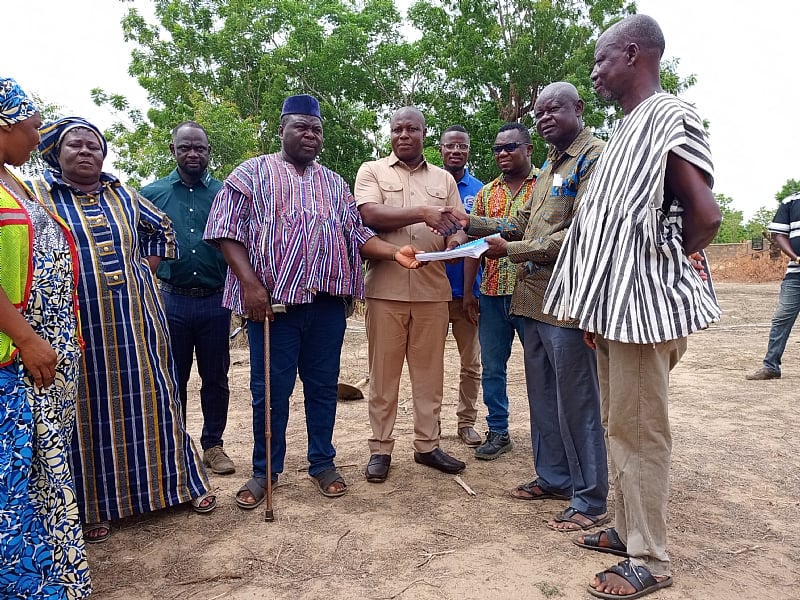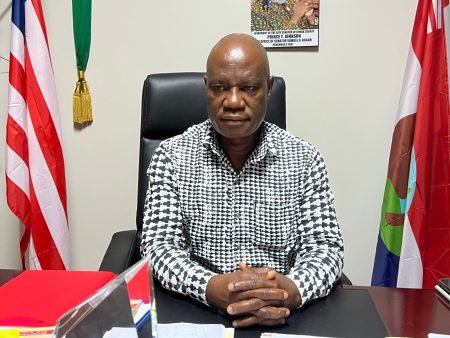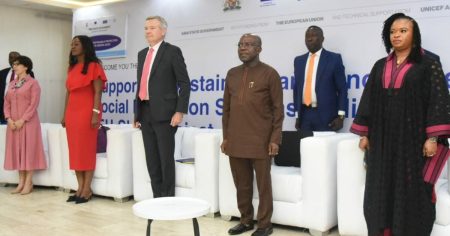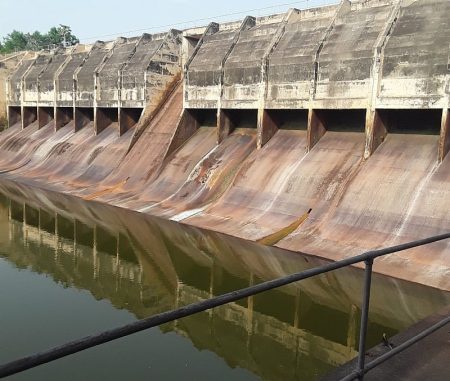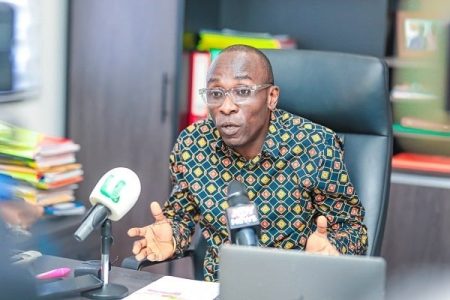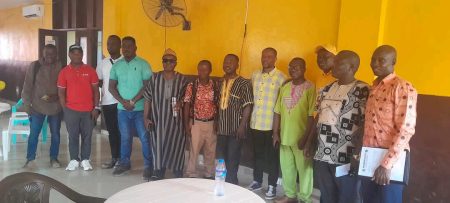The Nandom Municipal Assembly, led by Municipal Chief Executive (MCE) Hon. Anthony Ziniel, has embarked on a significant infrastructural development project aimed at bolstering the administrative capacity and service delivery of the Municipal Health and Agriculture Directorates. This initiative involves the construction of new office buildings for both directorates in the Danko community, a project financed through the District Assembly Common Fund Responsive Factor Grant (DACFRFG) to the tune of GHC1,033,474. This investment reflects the Assembly’s commitment to its medium to long-term development strategy, prioritizing improvements in key sectors crucial for the municipality’s progress.
The groundbreaking ceremony, held on May 5, 2025, marked the official commencement of the construction process. Hon. Ziniel, in his address, underscored the pivotal role the new infrastructure will play in enhancing the operational efficiency of the health and agriculture sectors. He emphasized the anticipated improvement in service delivery to the community, expressing confidence that the investment will equip both directorates with the necessary resources to better serve the people of Nandom. This development is expected to translate into tangible benefits for the local population, strengthening the overall health and agricultural landscape of the municipality.
The decision to situate the project in Danko was welcomed by the traditional leader, Danko Naa Naa Bernard Niyel, who expressed his appreciation to the Assembly for selecting their community. He urged residents to actively participate and support the project, ensuring its timely and successful completion. This collaboration between local authorities and the community highlights the importance of participatory development, fostering a sense of ownership and shared responsibility for the project’s success. The community’s involvement is crucial for not only the construction phase but also the long-term sustainability and utilization of the new facilities.
Mr. Bright Kpabitey, the Municipal Engineer, provided a detailed overview of the project’s funding mechanism and scope. He explained that the DACFRFG is a performance-based grant designed to empower Metropolitan, Municipal, and District Assemblies (MMDAs) to implement their local development plans effectively. He clarified that while the initial plan envisioned a two-story building, the current funding allocation will facilitate the completion of only the ground floor. Despite this adjustment, the completed structure will still comprise ten offices, washrooms, a conference hall, and a fully furnished interior, adequately equipped for administrative functions and meetings. This pragmatic approach ensures the project remains within budget while still delivering a functional and valuable asset to the community.
The construction timeline is projected to span eight months, with the final handover scheduled for December 2025. Mr. Kpabitey assured stakeholders that the necessary funds have already been secured, emphasizing the collective responsibility of the supervising department, the contractor, and all stakeholders to ensure the project adheres to the stipulated timeline. This commitment to timely execution underscores the importance of efficient project management and collaboration among all involved parties. The successful completion of the project within the designated timeframe will demonstrate effective resource allocation and a commitment to delivering tangible results for the community.
GabSeb Enterprise, the contractor entrusted with the project, has committed to prioritizing local labor in line with its company policy. Mr. Sebastian Gan, CEO of GabSeb Enterprise, affirmed that workers from the Danko community would be given preference during the construction phase. This commitment to local employment not only aligns with the company’s ethical practices but also offers economic opportunities to the community directly benefiting from the project. The inclusion of local labor contributes to community development and fosters a sense of ownership and pride in the project. The groundbreaking ceremony, attended by representatives from the Municipal Assembly, traditional authorities, community members, and other key stakeholders, signifies the collective support and anticipation surrounding this important development initiative. The completed facility is expected to significantly improve the working environment for staff, enhance community engagement in local development processes, and ultimately contribute to the overall well-being and progress of the Nandom municipality. This investment in infrastructure is a testament to the Assembly’s dedication to improving public services and fostering sustainable development within the community.





